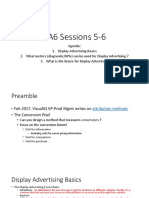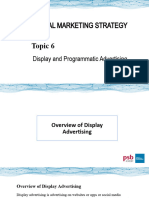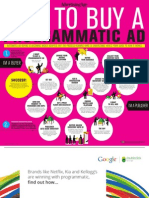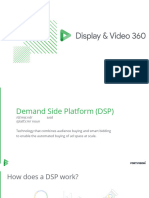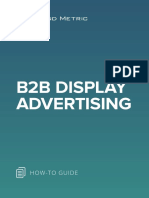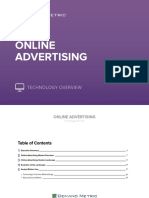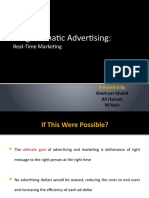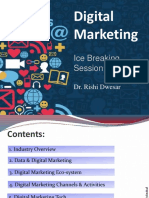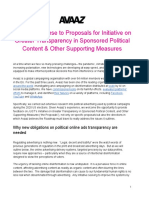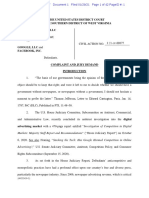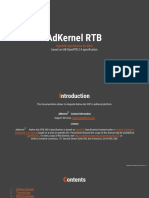0% found this document useful (0 votes)
49 views7 pagesProgrammaticAdvertisingGuide PDF LM5
The document discusses programmatic advertising, including how it works through demand side platforms (DSPs) and supply side platforms (SSPs) in real-time bidding auctions to efficiently match advertisers with online ad space. It also outlines the advantages of programmatic advertising and different targeting methods like contextual, keyword, geotargeting, and demographic targeting.
Uploaded by
Jean-louis DikasaCopyright
© © All Rights Reserved
We take content rights seriously. If you suspect this is your content, claim it here.
Available Formats
Download as PDF, TXT or read online on Scribd
0% found this document useful (0 votes)
49 views7 pagesProgrammaticAdvertisingGuide PDF LM5
The document discusses programmatic advertising, including how it works through demand side platforms (DSPs) and supply side platforms (SSPs) in real-time bidding auctions to efficiently match advertisers with online ad space. It also outlines the advantages of programmatic advertising and different targeting methods like contextual, keyword, geotargeting, and demographic targeting.
Uploaded by
Jean-louis DikasaCopyright
© © All Rights Reserved
We take content rights seriously. If you suspect this is your content, claim it here.
Available Formats
Download as PDF, TXT or read online on Scribd
/ 7









